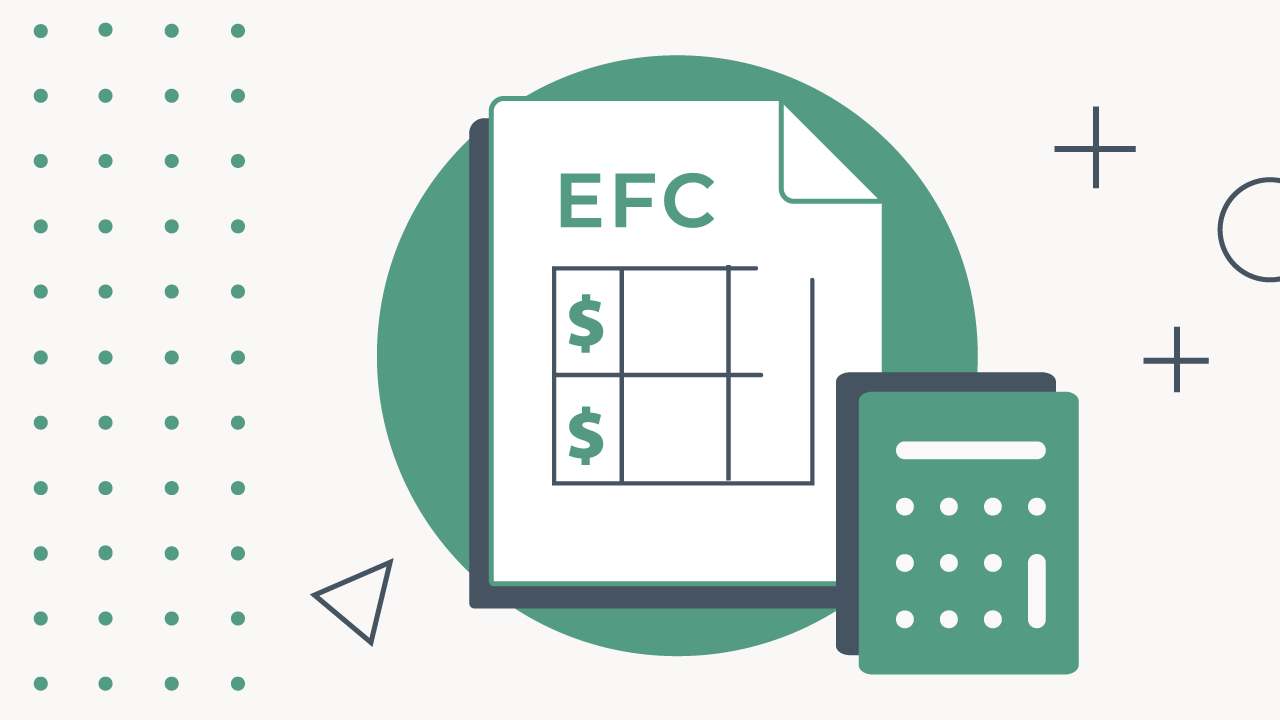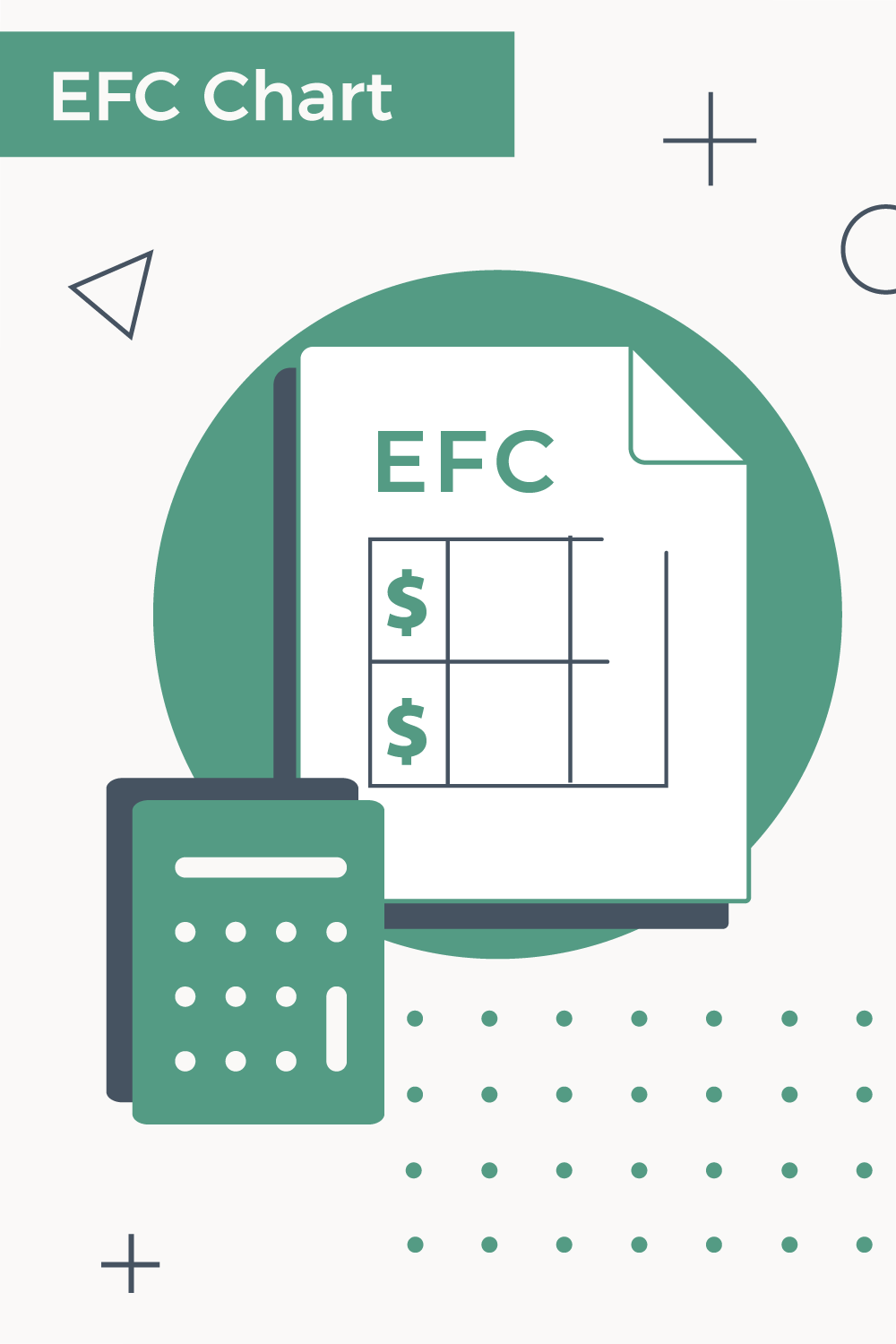
The Student Aid Index (SAI) will now replace the Expected Family Contribution (EFC) when calculating financial aid needs for families paying for college. This is the key formula that can help unlock scholarships, grants, federal student loans and other financial aid.
Both are calculated through formulas with information derived from the FAFSA form. The big reason behind the change is to create a better reflection on the true cost of colleges.
The formula is simple: cost of attendance (COA) minus Student Aid Index (SAI) and other financial assistance equals eligibility for need-based financial aid. But it's never simple...
In the past, many families have interpreted the EFC as the total cost that they will be expected to pay. However, many face higher costs because colleges don’t meet the full need of students or include loans as a part of the financial aid package.
The new term, Student Aid Index, can't erase the feelings that parents face when confronted with the costs of higher education. But it may allow parents and students paying for college to approach the financial challenge with fewer perceived expectations. With a more general term, parents may not feel solely responsible for funding their child’s higher education.
What Is The Student Aid Index?
Due to the confusing nature of the EFC, lawmakers have decided to make a change. However, the reality is that the change is mostly in name.
The basics of the formula that calculator the resulting number will remain the same. However, the FAFSA Simplification Act has brought a few updates to the formula that will change the way colleges calculate a student’s financial needs.
So, what's new?
Streamlined FAFSA Form
A major change is a more streamlined FAFSA form. Instead of answering over 100 questions, the FAFSA is only a few dozen questions. This should save students and parents time when applying for financial aid.
Cost Of Attendance Changes
The Cost of Attendance (COA) is another important number when sorting through college costs. Here are some of the changes including in the new law:
- A student will not need to be attending school on at least a part-time basis to allow for a personal computer’s rental or purchase. The student can be enrolled at any time commitment for this allowance.
- Transportation allowances between home, school, and work are allowed. A college financial aid administrator will set the actual transportation allowance.
- A student will need to be enrolled at least half-time to receive an allowance for personal expenses.
- Room and board allowances must be split into separate allowances for housing and meals. Meal allowances must be based on three meals per day.
- Housing allowances for students living in college-owned or operated housing will be based on the greater of the average or median housing costs.
- Housing allowances cannot be set to zero for students living with their parents at home.
- An allowance for private student loan fees is no longer applicable.
- An allowance for loan fees on federal loans for students and parents will be mandatory, instead of at the discretion of a college.
Multiple Students Will Be Treated Differently
In the past, families with multiple students attending college at the same time on at least a part-time basis received special treatment. The parent assessment was divided by the number of family members in college.
Also, independent students had their family contribution divided by the number of students attending college on a half-time basis.
The SAI will not be divided based on the number of students in college within a family. With that, middle and high-income families may miss out on previous opportunities to save.
New Pell Grant Eligibility
Eligibility for Pell Grants will be based on a multiple of the poverty line. Households may qualify with incomes between zero and 175% to 400% of the poverty line. Additionally, incarcerated students will be eligible for the Pell Grant.
Negative SAI Will Be Possible
If the student is eligible for the maximum federal Pell Grant, the Student Aid Index will be set to 0. But the financial aid formula can allow for an SAI to be below zero, as low as -$1,500. This can help colleges more accurately determine a student’s financial needs.
Student Aid Index Chart (Formerly EFC Chart)
For the majority of families thinking about how to pay for college for the first time, the SAI Chart is probably going to be pretty shocking. Remember, a "good SAI" is lower - the lower the score, the higher the potential for need-based financial aid.
Keep in mind this SAI Chart (EFC Chart) is only an estimate, and at some point you're going to want to put in your real data. See the calculator below.
When you check out the SAI Chart below, keep in mind that these figures are estimates and may change. Furthermore, assets are assumed to be zero, and student income is assumed to be zero.
You can find your family adjusted gross income (AGI) on the left, see how many dependent children you have, and you can see your Student Aid Index in the chart. The higher the SAI number, the less student aid you'll be eligible for.
Quick Reference:
- Green: Eligible for need-based aid at Public 2-Year, Public 4-Year, Private 4-Year, Elite Colleges
- Yellow: Eligible for need-based aid at Public 4-Year, Private 4-Year, Elite Colleges
- Orange: Eligible for need-based aid at Private 4-Year, Elite Colleges
- Red: Eligible for need-based aid at Elite Colleges
- Purple: No Need-Based Aid Eligibility
2024 - 2025 SAI Chart | ||||
|---|---|---|---|---|
AGI | 1 Dependent | 2 Dependents | 3 Dependents | 4 Dependents |
$30,000 | $0 | $0 | $0 | $0 |
$32,500 | $0 | $0 | $0 | $0 |
$35,000 | $0 | $0 | $0 | $0 |
$37,500 | $0 | $0 | $0 | $0 |
$40,000 | $0 | $0 | $0 | $0 |
$42,500 | $1,680 | $0 | $0 | $0 |
$45,000 | $2,122 | $0 | $0 | $0 |
$47,500 | $2,564 | $0 | $0 | $0 |
$50,000 | $3,066 | $1,504 | $0 | $0 |
$52,500 | $3,448 | $2,387 | $0 | $0 |
$55,000 | $3,890 | $2,387 | $0 | $0 |
$57,500 | $4,332 | $2,829 | $1,410 | $0 |
$60,000 | $4,774 | $3,271 | $1,852 | $0 |
$62,500 | $5,216 | $3,713 | $2,294 | $0 |
$65,000 | $5,703 | $4,155 | $2,736 | $0 |
$67,500 | $6,205 | $4,597 | $3,178 | $1,598 |
$70,000 | $6,752 | $5,039 | $3,620 | $2,040 |
$72,500 | $7,334 | $5,502 | $4,062 | $2,482 |
$75,000 | $7,953 | $6,004 | $4,504 | $2,924 |
$80,000 | $9,334 | $7,101 | $5,396 | $3,808 |
$85,000 | $10,883 | $8,314 | $6,364 | $4,660 |
$90,000 | $12,517 | $9,558 | $7,374 | $5,448 |
$95,000 | $14,170 | $10,965 | $8,513 | $6,328 |
$100,000 | $15,824 | $12,614 | $9,792 | $7,332 |
$105,000 | $17,477 | $14,267 | $11,235 | $8,463 |
$110,000 | $19,130 | $15,920 | $12,889 | $9,734 |
$115,000 | $20,783 | $17,573 | $14,542 | $11,167 |
$120,000 | $22,437 | $19,227 | $16,195 | $12,820 |
$125,000 | $24,090 | $20,880 | $17,848 | $14,474 |
$130,000 | $25,743 | $22,533 | $19,501 | $16,127 |
$135,000 | $27,396 | $24,186 | $21,155 | $17,780 |
$140,000 | $29,050 | $25,839 | $22,808 | $19,433 |
$145,000 | $30,703 | $27,493 | $24,461 | $21,087 |
$150,000 | $32,356 | $29,146 | $26,114 | $22,740 |
$155,000 | $34,009 | $30,799 | $27,768 | $24,393 |
$160,000 | $35,662 | $32,452 | $29,421 | $26,046 |
$165,000 | $37,316 | $34,106 | $31,074 | $27,699 |
$170,000 | $38,969 | $35,759 | $32,727 | $29,353 |
$175,000 | $40,622 | $37,412 | $34,380 | $31,006 |
$180,000 | $42,258 | $39,048 | $36,016 | $32,642 |
$185,000 | $43,864 | $40,654 | $37,623 | $34,248 |
$190,000 | $45,470 | $42,260 | $39,229 | $35,854 |
$195,000 | $47,077 | $43,867 | $40,835 | $37,460 |
$200,000 | $48,683 | $45,473 | $42,441 | $39,067 |
$205,000 | $50,289 | $47,079 | $44,047 | $40,673 |
$210,000 | $51,895 | $48,685 | $45,654 | $42,279 |
$215,000 | $53,502 | $50,291 | $47,260 | $43,885 |
$220,000 | $55,108 | $51,898 | $48,866 | $45,492 |
$225,000 | $56,714 | $53,504 | $50,572 | $47,098 |
$230,000 | $58,320 | $55,110 | $52,079 | $48,708 |
$235,000 | $59,926 | $56,716 | $53,685 | $50,310 |
$240,000 | $61,533 | $58,323 | $55,291 | $51,196 |
$245,000 | $63,139 | $59,929 | $56,879 | $53,523 |
$250,000 | $64,745 | $61,535 | $58,503 | $55,129 |
$275,000 | $72,776 | $69,566 | $66,535 | $63,160 |
$300,000 | $80,982 | $77,772 | $74,741 | $71,366 |
The really big change, not shown in this chart, is the elimination of the sibling loophole.
Previously, the number of dependents in college had two impacts. It divided the parent contribution and it reduced the income protection allowance. Eliminating the former causes a decrease in financial need. Eliminating the latter causes a slight increase in financial need. The impact of the former is greater as income increases, so it mostly leads to less aid for middle and high income families with multiple children in college at the same time. The elimination of the small business exclusion also has a big impact.
Another change that is overlooked is the elimination of the state and local tax allowance. In high tax states, this will cause a big decrease in financial need, to the tune of thousands of dollars difference in financial aid, especially for middle and high-income families.
Student Aid Index Calculator
Now that you know some of the basics, check out this SAI Calculator to see how your personal situation compares.
MyCollegeCorner has a great SAI Calculator that can provide a pretty accurate result in about 8 minutes of data entry. Check it out here:
Pell Grant Eligibility Formula
Also, the secondary Pell Grant eligibility formula (minimum Pell Grant at 275% of the poverty line, maximum Pell Grant at 175% of the poverty line) is not shown in this chart.
Here are the thresholds so that you can compare them to the SAI Chart above.
Family Size | 2022 Poverty Line | 175% Poverty Line | 225% Poverty Line |
|---|---|---|---|
1 | $13,590 | $23,783 | $37,373 |
2 | $18,310 | $32,043 | $53,353 |
3 | $23,030 | $40,303 | $63,333 |
4 | $27,750 | $48,563 | $76,313 |
5 | $32,470 | $56,823 | $89,293 |
6 | $37,190 | $65,083 | $102,273 |
Key SAI Observations
There are a few changes that we can see from looking at the SAI Chart. The SAI figures are lower when compared to past years going back to 2017 (with the EFC calculation). However, the figures are higher than in 2023-24 for income above about $50,000. It looks like this is partly due to the elimination of the state income tax allowance, which had a bigger impact than expected.
Specifically for the Student Aid Index, it appears that each additional child reduces SAI by about $3,000.
Each additional $10,000 in parent income increases SAI by $3,000 (except for under $80,000 AGI, when it runs from about $1,750 to about $2,750, mostly the former).
Editor's Note: This article was updated to better reflect the changes to the sibling loophole.

Mark Kantrowitz is an expert on student financial aid, scholarships, 529 plans, and student loans. He has been quoted in more than 10,000 newspaper and magazine articles about college admissions and financial aid. Mark has written for the New York Times, Wall Street Journal, Washington Post, Reuters, USA Today, MarketWatch, Money Magazine, Forbes, Newsweek, and Time. You can find his work on Student Aid Policy here.
Mark is the author of five bestselling books about scholarships and financial aid and holds seven patents. Mark serves on the editorial board of the Journal of Student Financial Aid, the editorial advisory board of Bottom Line/Personal, and is a member of the board of trustees of the Center for Excellence in Education. He previously served as a member of the board of directors of the National Scholarship Providers Association. Mark has two Bachelor’s degrees in mathematics and philosophy from the Massachusetts Institute of Technology (MIT) and a Master’s degree in computer science from Carnegie Mellon University (CMU).
Editor: Robert Farrington Reviewed by: Chris Muller
